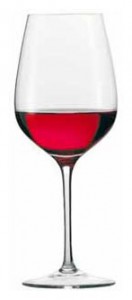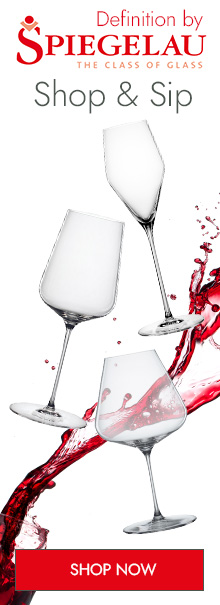As covered in “From Wine Cooler to Wine Color,” looking at wine is one of the ways to fully experience it. Knowing the expected color based on the type of wine, measuring opacity, and describing the particular hue of a wine are steps in visual assessment previously covered. What remains in evaluating appearance involves clarity and viscosity.
Wine Clarity
Clarity is a function of how well light is transmitted or reflected through the body of liquid. There should be a sharp clarity to every wine, since absence of clarity means a presence of cloudiness, film, or muddiness, all of which are conditions which mean that the wine has spoiled.
If light passes through without a source of obstruction, the wine is extremely clear. It’s more challenging to see clarity in a red wine, as compared to a white wine. Either way, a back light is needed.
A good source of light is important for evaluating color and clarity. The sun is the best full-spectrum light source to use for assessing wine clarity, but standard incandescent light bulbs work well, too.
With sparkling wine or champagne, clarity is easy to assess because it has a bright glow. It is also easy to see right through white wine, which has a shiny quality.
The dark colors of red wine make clarity more difficult to evaluate. Tip the glass away from you against the white background. There should be a deep shine, as though light were being reflected from within.
Wine Viscosity
The viscosity of wine is often described as a wine having “legs,” but this is arguably one of the areas of wine tasting that is most misconceived. The “legs” are the stripes a wine makes as the liquid slowly rolls down the side of your glass after you have swirled the wine. This is a basic misconception because several things contribute to a “wine’s legs.” What causes the liquid to move more slowly down the glass is a matter to be sorted out between seeing and tasting the wine.
In general, the wine’s legs is indicative of its viscosity. But take this description into context and it doesn’t entirely hold up. Honey, for instance, is highly viscous because of the high sugar content. In other words, sugar concentration is one of several traits that can determine the wine legs. Dessert wines tend to be more viscous because they are sweeter.
Alcohol content also affects viscosity. It gives wine more legs because alcohol is more viscous than water. Port and Madeira are both high in sugar and alcohol, which is why they have legs more profound than other wines.
The concentration of compounds dissolved into wine also influences viscosity. Dark, heavily extracted red wines with big taste have more legs than lighter wines.
What are you looking for in a wine?
Between part one, “From Wine Cooler to Wine Color,” and this information about clarity and viscosity, you now have everything you need to make an assessment about wine according to its appearance. There are many more elements to taking full tasting notes, but it’s good to know how to begin with the eyes.






